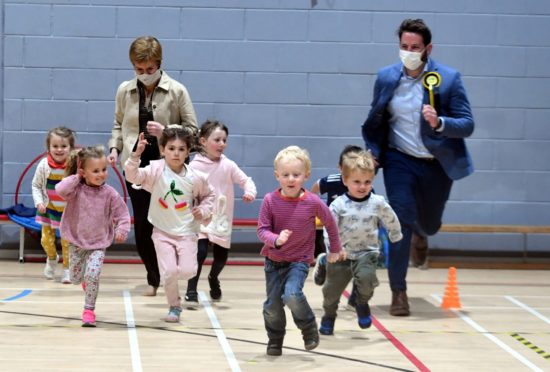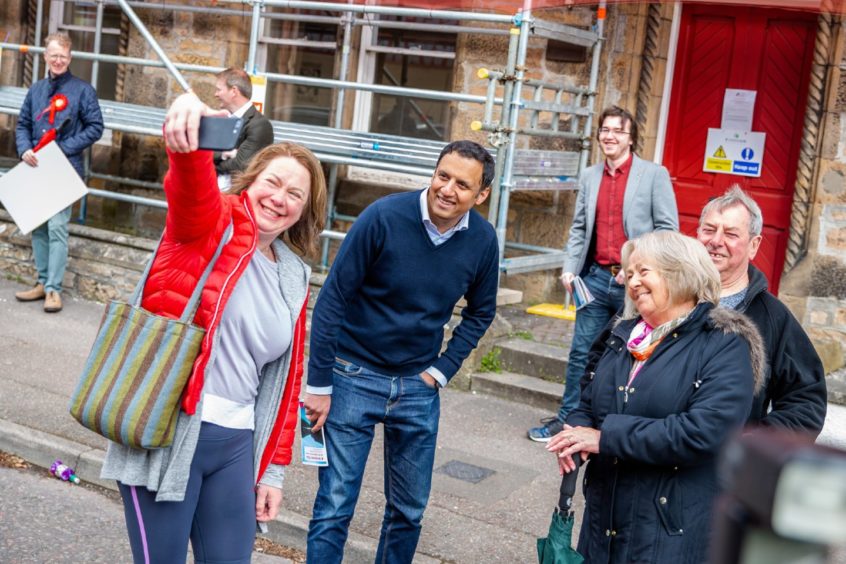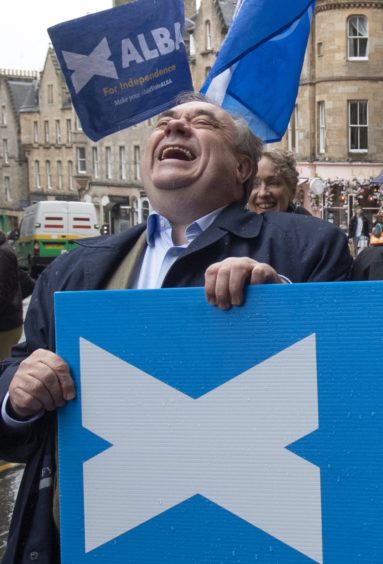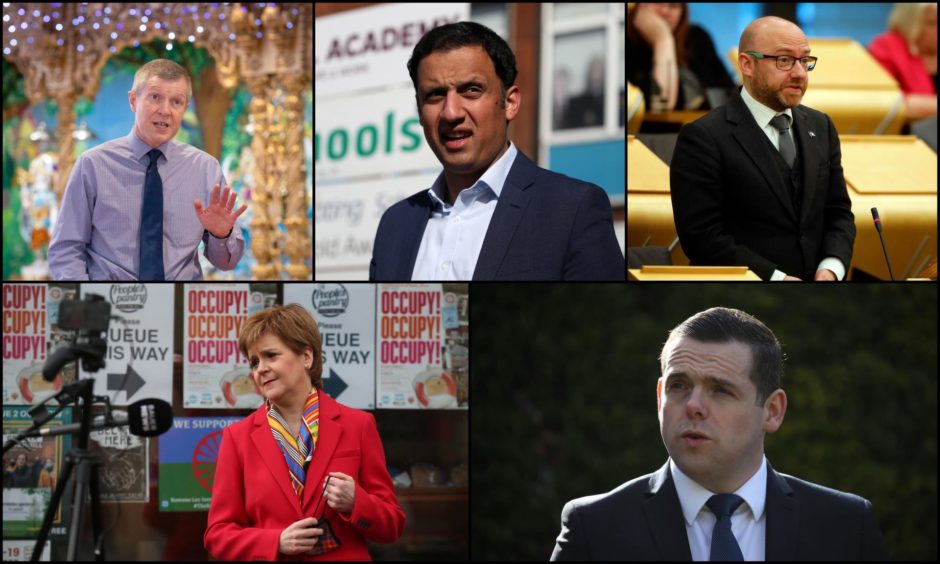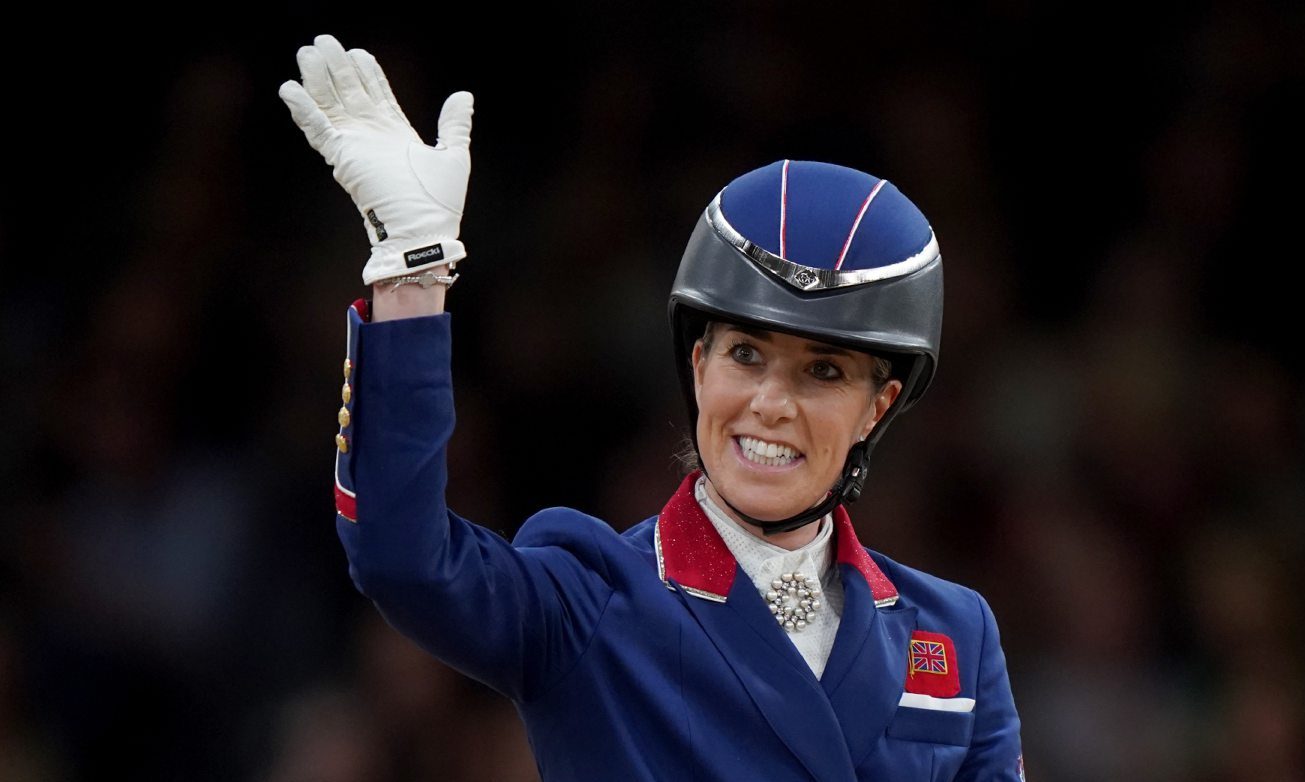Nicola Sturgeon has put herself at the centre of the SNP’s election battle, insisting she is the only politician offering ‘serious leadership’ and promoting her brand rather than the party’s on campaign posters.
As Scotland’s First Minister for the past seven years and by far the most visible of the current party leaders, it would be odd if she wasn’t regarded as the SNP’s biggest electoral asset.
But the day will come when she must go and, if she alone can lead, as she says, who would the Nationalist movement be left with?
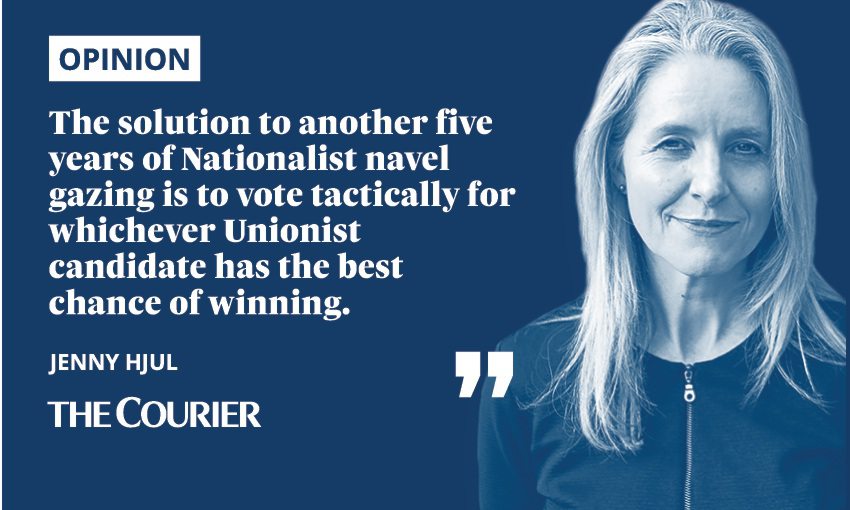
Sturgeon has said she will serve a full five-year term if re-elected First Minister by the parliament after the results are in.
But what if she gets a hammering, even a relative one, tomorrow? She is defending a 9,593 majority in her Glasgow Southside constituency and it would take a monumental upset to unseat her.
Her chief challenger is Scottish Labour’s new leader, Anas Sarwar, who is widely regarded to have had a good election.
He is unlikely to beat Sturgeon but if he puts a big enough dent in her support, her future will be cast into doubt and the repercussions felt across the Yes project.
The SNP need to win 65 seats for an overall majority, two more than they secured in the 2016 election. The most optimistic polls – for Unionists anyway – suggest there is less than a 30 per cent chance of such an outcome.
Anything under 60 seats would be a significant blow to party morale, and would force Sturgeon into the humiliation of hard bargaining with Patrick Harvie’s Greens, who are tipped to improve on their 2016 performance.
Worse for her is the spectre of Alex Salmond muscling in on a pro-independence alliance, should he or any of his Alba party hopefuls be successful on the regional list.
Sturgeon has said she will not work with Salmond (she is not even speaking to him) and he will not cooperate with her (legal) approach to constitutional change – which seeks Westminster approval – because it is doomed to fail.
This is hardly a resounding mandate for a new independence referendum, which has been the focus of the SNP’s campaign, even if they have been in denial because it is in such poor taste as Scotland recovers from the impact of Covid.
The election looks set to produce a low, perhaps historically low, turnout as people put their lives back together after the pandemic.
Polls not budging
The political scientist John Curtice said a comparison of polls conducted in the past few days and those from early March shows little shift in voting intentions. The electorate, it seems, is indifferent to manifesto pledges and doorstep (or virtual) enticements.
If Sturgeon has appeared weary at times it is because she knows that the momentum needed to break away from Britain has been lost, if it ever existed.
A consistent downward trend gives the Nationalists about as much of a chance now as they had back in 2014, in the unlikely event that they could stage a second plebiscite.
Why waste a vote on a party that has delivered nothing of value in 14 years in government?
So, what are people voting for? If it’s not the SNP’s un-costed and therefore ruinous plans for secession, why waste a vote on a party that has delivered nothing of value in 14 years in government?
The SNP has had plenty of opportunity to address the problems in education and the NHS.
They have had resources but not resolve to fix the rural housing crisis, and invest meaningfully in transport infrastructure.
Voters need look no further than the state engineered ferry building fiasco on the Clyde for evidence of SNP incompetence.
Tactics game
Opting for the Greens makes even less sense. Their agenda would plunge Scotland into a new Dark Ages, with all industry and means of wealth creation destroyed, and eco diktats exerting coercive controls on our behaviour.
There is still time to stop the rot. Although the leaders of both Scottish Labour and the Scottish Conservatives are untested, their parties, along with the Lib Dems, can hold off the threat of further damage to Scotland from squabbling separatists.
The solution to another five years of Nationalist navel gazing is to vote tactically for whichever Unionist candidate has the best chance of winning. And then to favour Labour, the Conservatives or Lib Dems in the regional vote.
By delivering a bloody nose to the SNP, voters can save Scotland from the brink of disaster. We may have to wait until the 2026 election to restore a Unionist government, but a minority Nationalist administration – with a weakened leader – will have no authority to pursue divisive secessionist politics.
Scotland has not benefited from SNP rule and deserves better governance that puts national interests before Nationalist obsessions.
The future is in our hands and we must use our votes responsibly, for the whole country’s sake.
